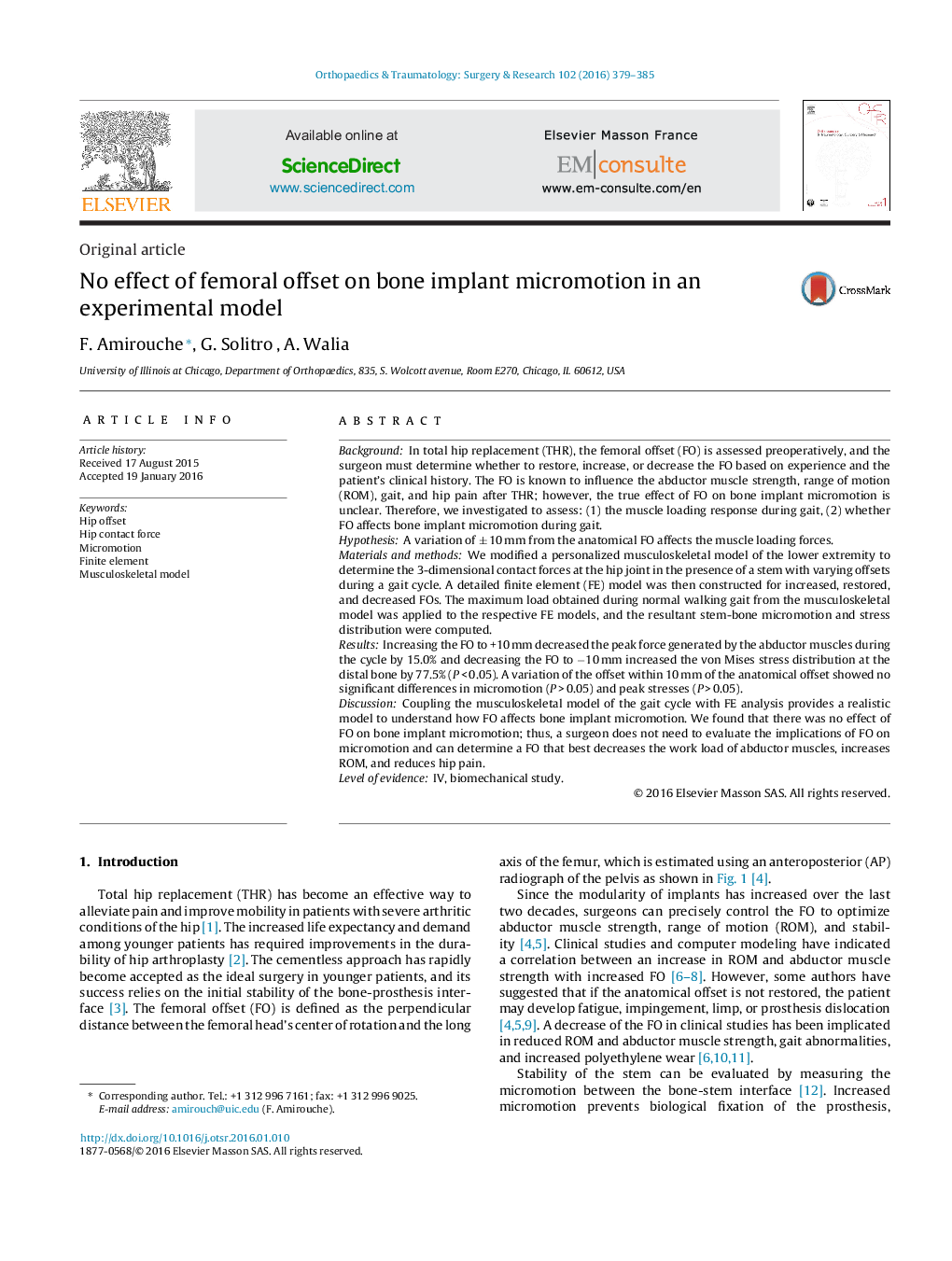| Article ID | Journal | Published Year | Pages | File Type |
|---|---|---|---|---|
| 4080743 | Orthopaedics & Traumatology: Surgery & Research | 2016 | 7 Pages |
BackgroundIn total hip replacement (THR), the femoral offset (FO) is assessed preoperatively, and the surgeon must determine whether to restore, increase, or decrease the FO based on experience and the patient's clinical history. The FO is known to influence the abductor muscle strength, range of motion (ROM), gait, and hip pain after THR; however, the true effect of FO on bone implant micromotion is unclear. Therefore, we investigated to assess: (1) the muscle loading response during gait, (2) whether FO affects bone implant micromotion during gait.HypothesisA variation of ± 10 mm from the anatomical FO affects the muscle loading forces.Materials and methodsWe modified a personalized musculoskeletal model of the lower extremity to determine the 3-dimensional contact forces at the hip joint in the presence of a stem with varying offsets during a gait cycle. A detailed finite element (FE) model was then constructed for increased, restored, and decreased FOs. The maximum load obtained during normal walking gait from the musculoskeletal model was applied to the respective FE models, and the resultant stem-bone micromotion and stress distribution were computed.ResultsIncreasing the FO to +10 mm decreased the peak force generated by the abductor muscles during the cycle by 15.0% and decreasing the FO to −10 mm increased the von Mises stress distribution at the distal bone by 77.5% (P < 0.05). A variation of the offset within 10 mm of the anatomical offset showed no significant differences in micromotion (P > 0.05) and peak stresses (P > 0.05).DiscussionCoupling the musculoskeletal model of the gait cycle with FE analysis provides a realistic model to understand how FO affects bone implant micromotion. We found that there was no effect of FO on bone implant micromotion; thus, a surgeon does not need to evaluate the implications of FO on micromotion and can determine a FO that best decreases the work load of abductor muscles, increases ROM, and reduces hip pain.Level of evidenceIV, biomechanical study.
